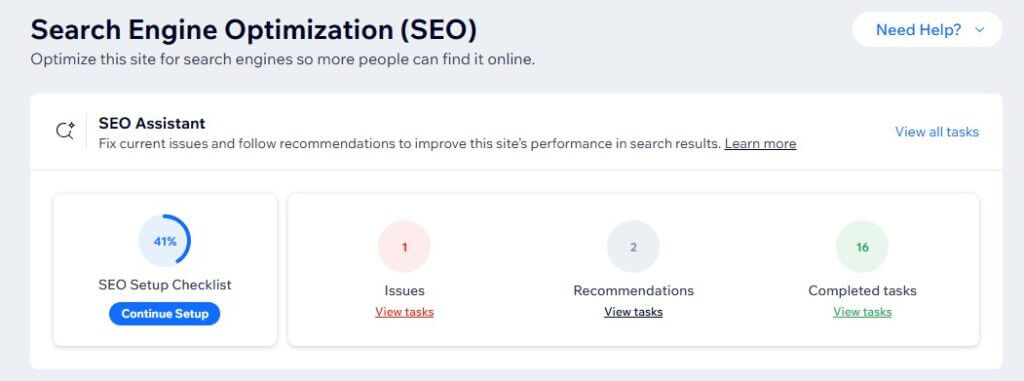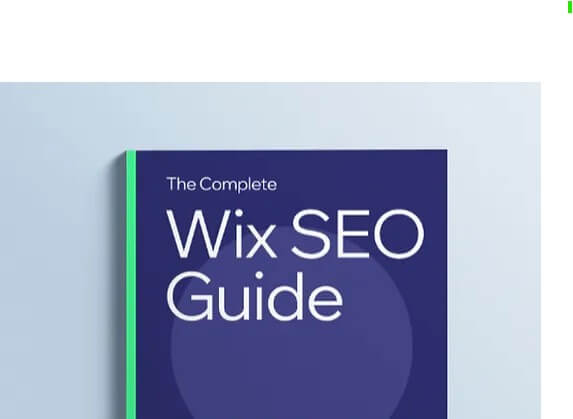So, you’ve got a fantastic travel blog and you’re ready to take it to the next level? Creating a captivating travel blog is exciting, but reaching a wider audience and driving organic traffic requires strategic SEO. Wix, a user-friendly website builder, offers powerful Wix for SEO tools to help you optimize your blog and boost your online visibility.
In this article, I’ll delve into the three main features you can use to optimize your Wix travel blog for Search Engine Optimization (SEO). By following these tips, you can improve your blog’s visibility on search engines like Google, attracting more organic traffic and potential readers.
Wix’s SEO Assistant: Your Personal SEO Guide
3
Wix’s SEO Assistant is a powerful, built-in tool that provides personalized recommendations to optimize your travel blog for search engines. This AI-powered assistant analyzes your website and offers actionable advice to improve your site’s visibility and ranking.
Here’s how the SEO Assistant can help you:
Keyword Suggestions
Keywords are the foundation of search engine optimization. They tell search engines what your content is about, allowing them to match your blog posts to relevant search queries. Wix’s SEO Assistant uses sophisticated algorithms to analyze your blog’s content and suggest relevant keywords. These keywords can be:
- Short-tail keywords: These are broad, general keywords like “travel blog” or “vacation ideas.”
- Long-tail keywords: These are more specific keywords, such as “best places to visit in Bali in December” or “budget travel tips for Europe.”
Meta Description Optimization
A meta description is a brief summary of your webpage’s content that appears below the title in search engine results. It’s your first opportunity to capture a user’s attention and entice them to click through to your blog post. Wix’s SEO Assistant helps you craft compelling meta descriptions by:
- Keyword Optimization: Suggesting relevant keywords to include in your meta description.
- Character Count: Ensuring your meta description is within the optimal character limit.
- Call to Action: Encouraging users to click through with a strong call to action.
Visit:

Utilize Performance Analytics: Data-Driven Decisions for Your Blog
2
Wix’s Performance Analytics is a powerful tool that provides valuable insights into your blog’s performance. By tracking key metrics, you can make data-driven decisions to improve your blog’s visibility and engagement. Key metrics to track:
Traffic Sources:
- Organic Search: Analyze the number of visitors coming to your blog through search engines like Google.
- Social Media: Track traffic from social media platforms like Instagram, Facebook, and Twitter.
- Direct Traffic: Monitor the number of visitors typing your website’s URL directly into their browser.
- Referral Traffic: Identify websites that are referring traffic to your blog.
Top-Performing Pages:
- Most Popular Posts: Identify your most popular blog posts based on page views, time on page, and other metrics.
- High-Engagement Posts: Analyze which posts are generating the most comments, shares, and likes.
Keyword Rankings:
- Track Keyword Rankings: Monitor your blog’s position in search engine results for target keywords.
- Identify Opportunities: Identify keywords with high search volume and low competition to target.
By analyzing these metrics, you can gain valuable insights into your audience’s behavior and make informed decisions to improve your blog’s performance.
Visit:

Learn SEO from the Experts: A Comprehensive Guide
1
Wix offers a comprehensive “Learn SEO” resource, featuring a panel of 11 SEO experts. This valuable platform provides in-depth knowledge and practical tips on various SEO topics, including:
- On-Page SEO: Learn how to optimize your blog posts’ titles, meta descriptions, headers, and content for search engines.
- Off-Page SEO: Discover strategies to build high-quality backlinks and improve your website’s authority.
- Technical SEO: Understand the technical aspects of SEO, such as website structure, XML sitemaps, and robots.txt.
- Local SEO: Optimize your blog for local search to attract visitors from your target area.
You can access these resources through Wix’s “SEO Hub” platform. It’s a great way to learn SEO from industry experts and improve your website’s visibility.
Visit:

“Wix has helped our team create better contents to reach more audience.”
WOW Travel
Other Features on Wix for SEO
Besides these three things you can take advantage of as Wix users, this platform offers so much more. Below are some of the SEO-related features on Wix. To learn more about other features, check out this article on Wix features for travel bloggers.
Image Optimization
Images are a crucial part of any travel blog. They can break up text, add visual interest, and help to tell your story. However, if not optimized correctly, they can slow down your website’s loading speed and hinder your SEO efforts.
Wix’s SEO Assistant can help you optimize your images by:
- Suggesting Descriptive Alt Text: Alt text is a text description of an image that is used by screen readers and search engines. By using descriptive alt text, you can improve your website’s accessibility and SEO.
- Recommending Proper File Formats: The SEO Assistant can suggest the best file format for your images, such as JPEG or PNG. Choosing the right format can significantly reduce file size without compromising image quality.
Mobile Optimization
With more and more people browsing the internet on their mobile devices, it’s crucial to ensure that your travel blog is mobile-friendly. A mobile-friendly website not only improves user experience but also boosts your SEO rankings.
Wix’s SEO Assistant can help you optimize your blog for mobile devices by:
- Checking Mobile-Friendliness: The tool analyzes your website’s layout, font size, and other mobile-specific factors.
- Identifying Issues: It highlights any issues that could negatively impact the mobile user experience, such as slow loading times or poor readability.
- Providing Improvement Suggestions: The SEO Assistant offers specific recommendations to improve your website’s mobile performance, such as optimizing images, reducing page load time, and ensuring easy navigation.
Site Speed Optimization
A slow-loading website can frustrate visitors and negatively impact your SEO. Fast-loading websites, on the other hand, provide a better user experience and rank higher in search engine results.
Wix’s SEO Assistant can help you identify and fix performance bottlenecks by:
- Analyzing Page Load Times: The tool measures how long it takes for your website to load.
- Identifying Performance Issues: It pinpoints specific elements that are slowing down your website, such as large images, unoptimized code, or slow-loading scripts.
- Recommending Performance Improvements: The SEO Assistant offers practical solutions to improve your website’s loading speed, such as:
- Compressing Images: Reducing the file size of images without compromising quality.
- Minifying Code: Removing unnecessary characters from your website’s code.
- Leveraging Browser Caching: Storing static files on the user’s browser to reduce load times.
Some images in this article are copyrighted by Wix.
